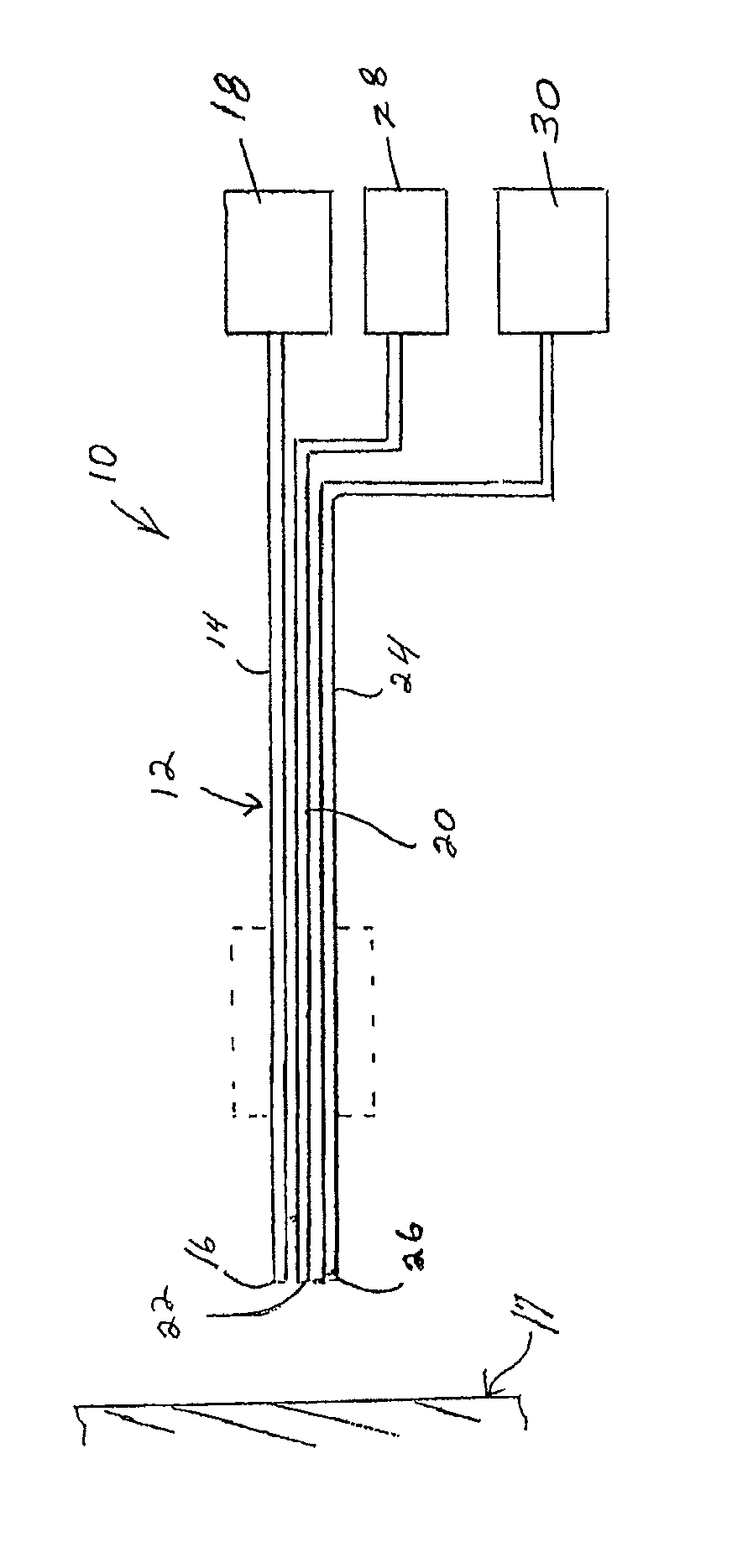Method and composition for hyperthermally treating cells
a cell and hyperthermal treatment technology, applied in the field of methods and compositions for hyperthermal treatment cells, can solve the problems of elude detection, immediate cell death, and ineffective treatment, and achieve the effect of reducing the duration of chemotherapy administered to a patient and minimizing or eliminating the adverse effects of chemotherapy
- Summary
- Abstract
- Description
- Claims
- Application Information
AI Technical Summary
Benefits of technology
Problems solved by technology
Method used
Image
Examples
Embodiment Construction
[0031]The present invention is directed to a method and composition for hyperthermally treating tissue. In particular, the invention is directed to as method for heating tissue above a temperature effective to kill tissue cells or inhibit multiplication of cells below the protein denaturization temperature of the tissue.
[0032]The method of the invention introduces a composition into the bloodstream or other system of the body in a location to flow into or through a target site to be treated. In one embodiment, the composition is introduced into the lymphatic system. A heat source such as generated by radiation energy is applied to the target site to heat the tissue in the target site for a time sufficient to hyperthermally treat the tissue and activate the composition. As used herein, the term “hyperthermal” refers to a temperature of the cell or tissue that kills or damages the cells without protein denaturization.
[0033]The composition contains a temperature indicator that is able ...
PUM
 Login to View More
Login to View More Abstract
Description
Claims
Application Information
 Login to View More
Login to View More - R&D
- Intellectual Property
- Life Sciences
- Materials
- Tech Scout
- Unparalleled Data Quality
- Higher Quality Content
- 60% Fewer Hallucinations
Browse by: Latest US Patents, China's latest patents, Technical Efficacy Thesaurus, Application Domain, Technology Topic, Popular Technical Reports.
© 2025 PatSnap. All rights reserved.Legal|Privacy policy|Modern Slavery Act Transparency Statement|Sitemap|About US| Contact US: help@patsnap.com

